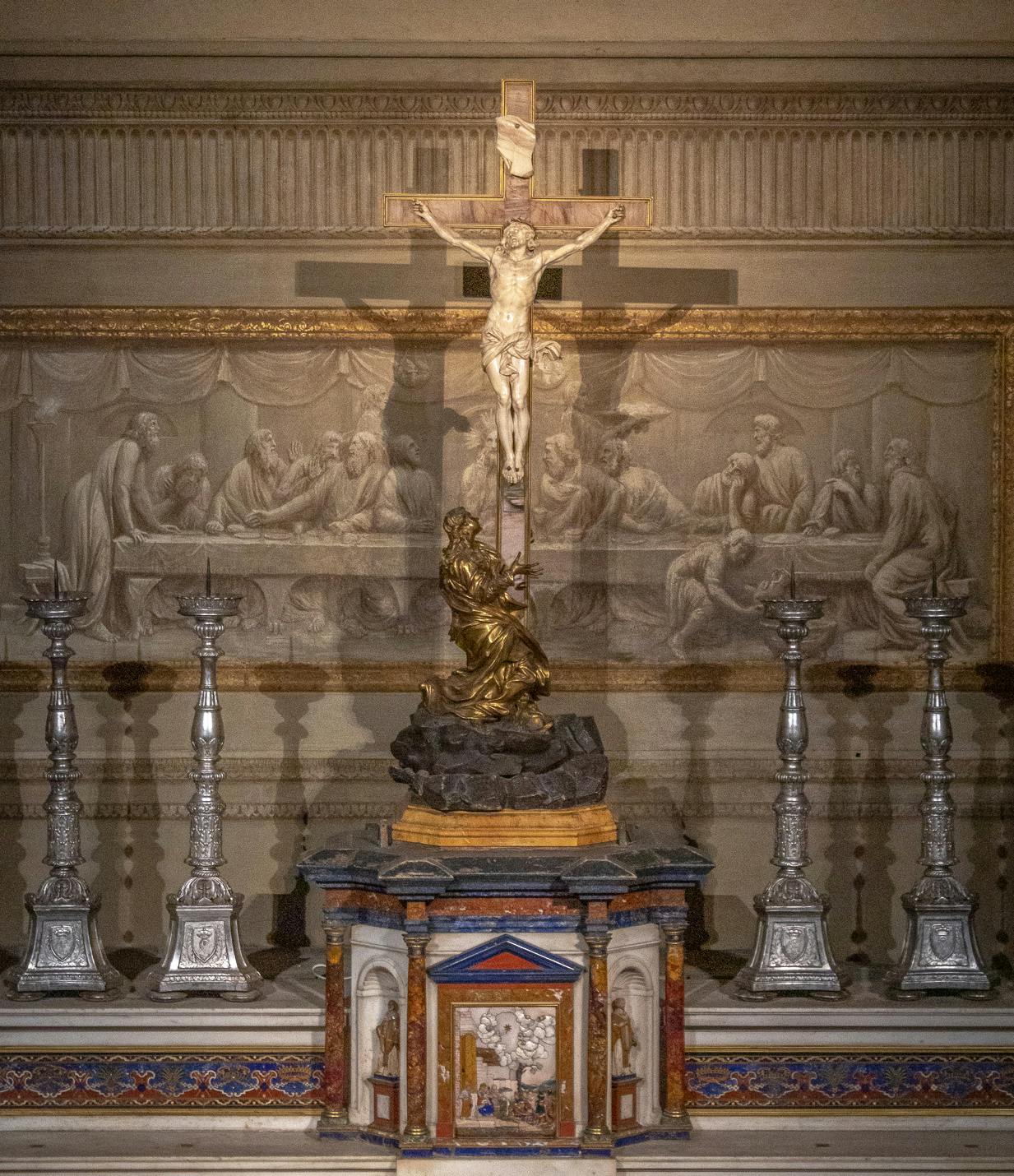Chigi Crucifix
Lorenz Rues and Antonio Raggi
The figure of Christ in ivory is mounted on a cross covered in petrified wood and framed in gilded bronze. The crumpled cartouche, in ivory, bears the traditional inscription “Jesus of Nazareth, King of the Jews” engraved in Hebrew, Latin and Greek. At the foot of the cross kneels the figure of St. Mary Magdalene in gilded bronze. The stony ground on which the saint rests is cast in this same metal, symbolising the ruggedness of Mount Calvary.
The magnificent group, originally located in the Grand Ducal apartments of Palazzo Pitti, was placed on the altar of the Palatine Chapel in 1785. It was commissioned by Cardinal Flavio Chigi, nephew of Pope Alexander VII, who, at the time of his death in 1693, bequeathed it to Cosimo III de’ Medici as a sign of gratitude for having granted him the investiture of the marquisate of San Quirico d’Orcia. The bronze figure of Mary Magdalene was made in 1672 by the sculptor Antonio Raggi, an important exponent of Roman Baroque and a faithful collaborator of Gian Lorenzo Bernini. A few years earlier, in 1670, the monumental ivory Christ was carved, the work of the South Tyrolean artist Lorenz Rues, active in Rome and specialised in the creation of large ivory figures of considerable technical virtuosity. The example in the Palatine Chapel is one of the artist’s masterpieces. Two other crucifixes of extraordinary dimensions are known to be in the sacristy of the Basilica of San Giovanni in Laterano in Rome and in the sacristy of the Toledo Cathedral in Spain.
